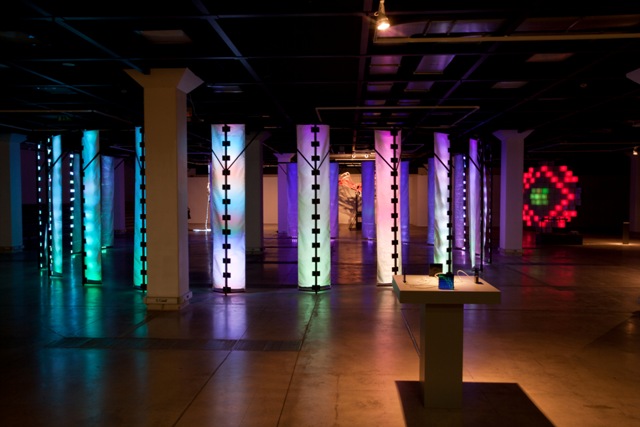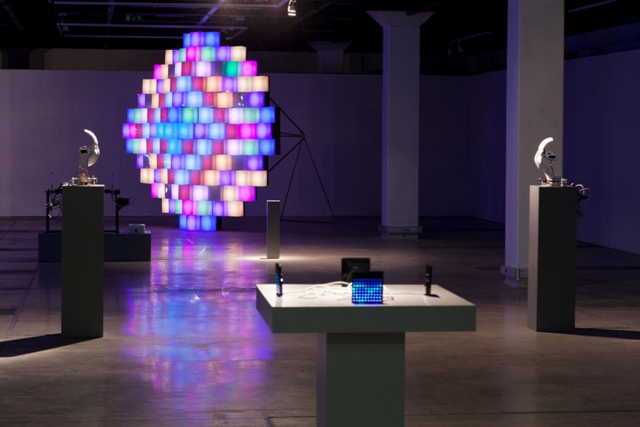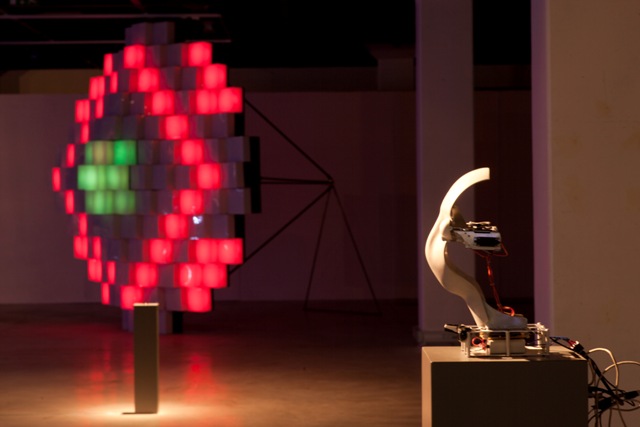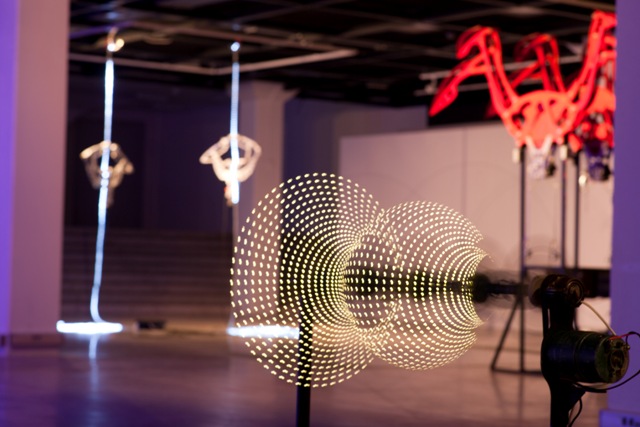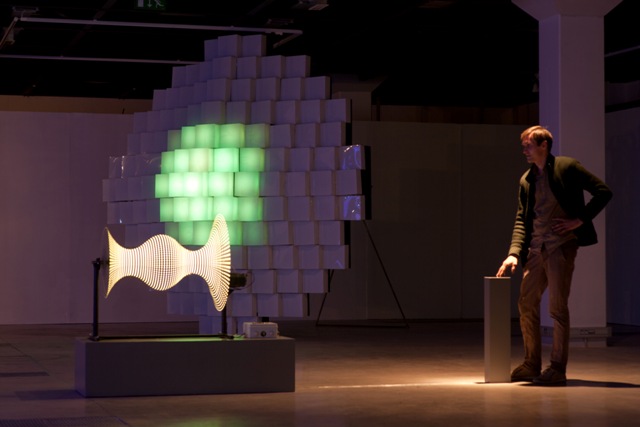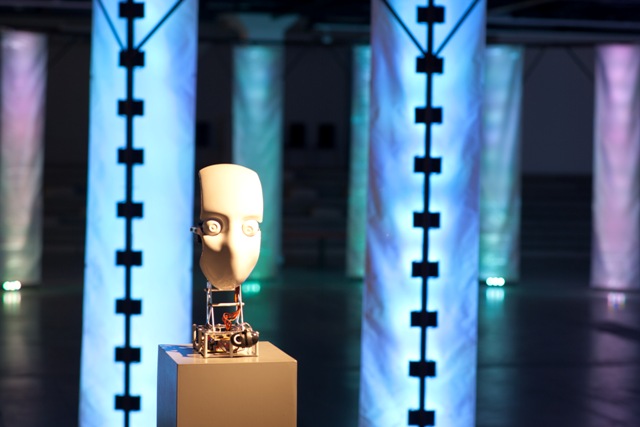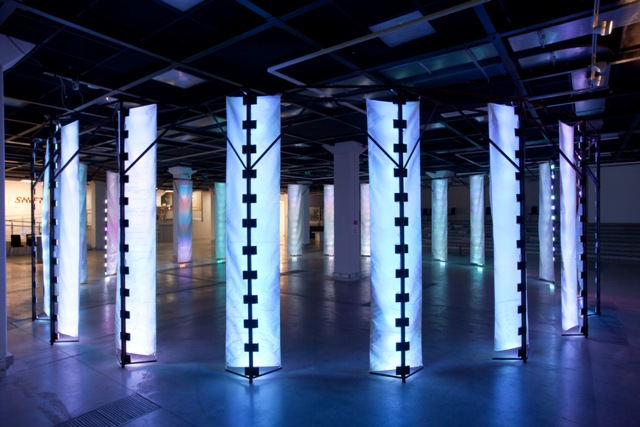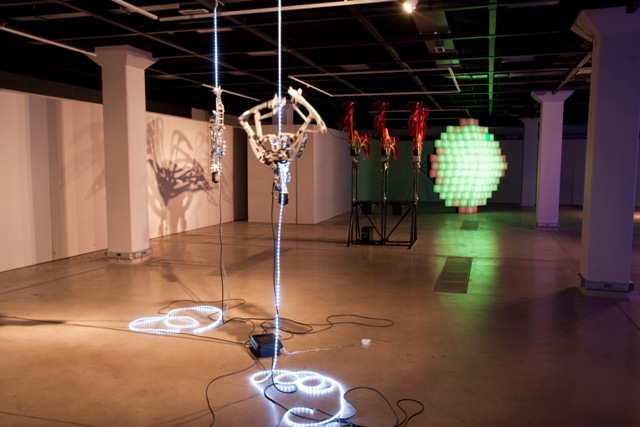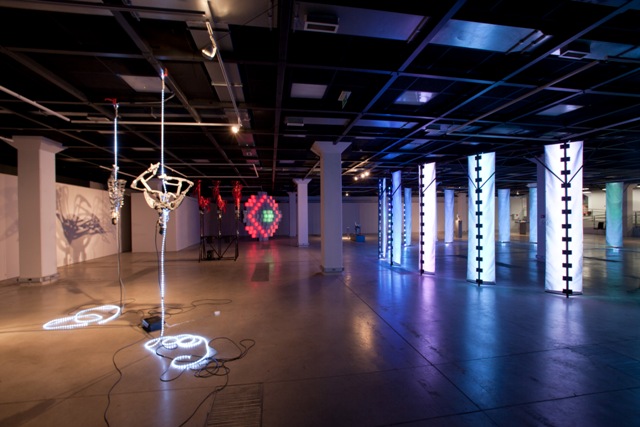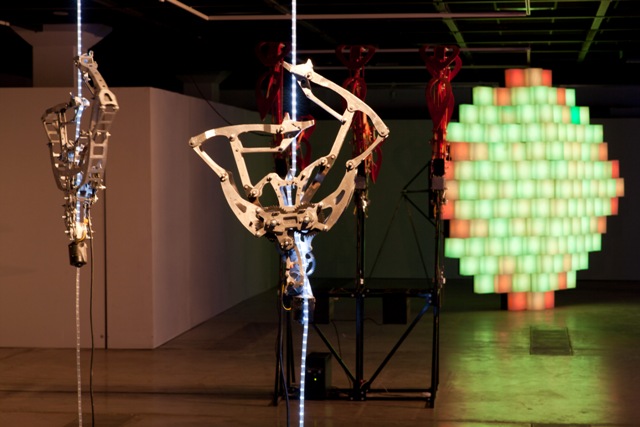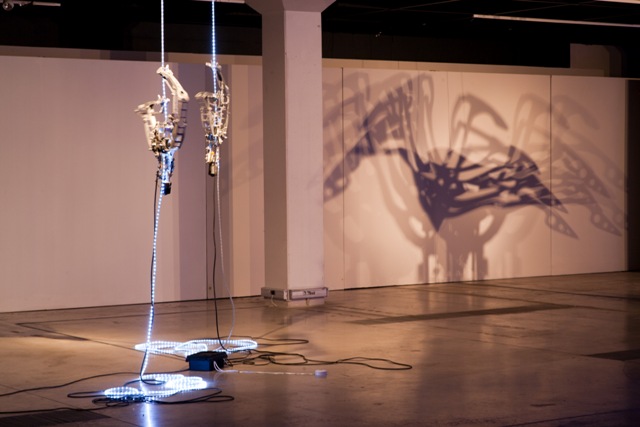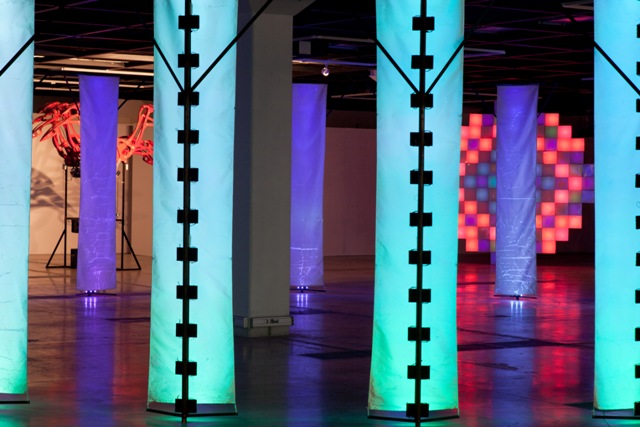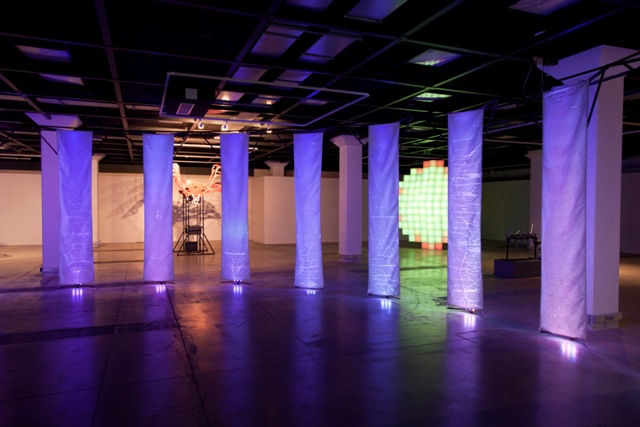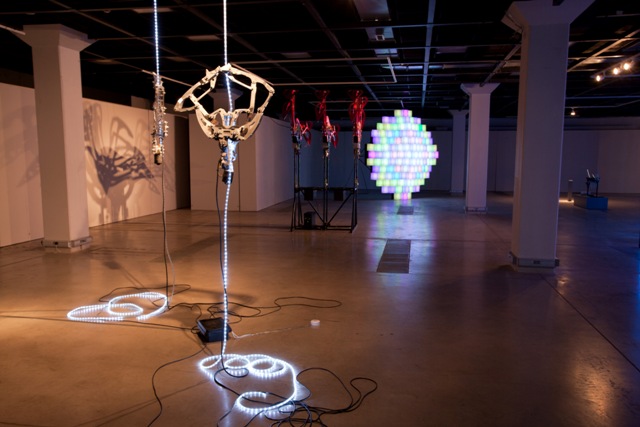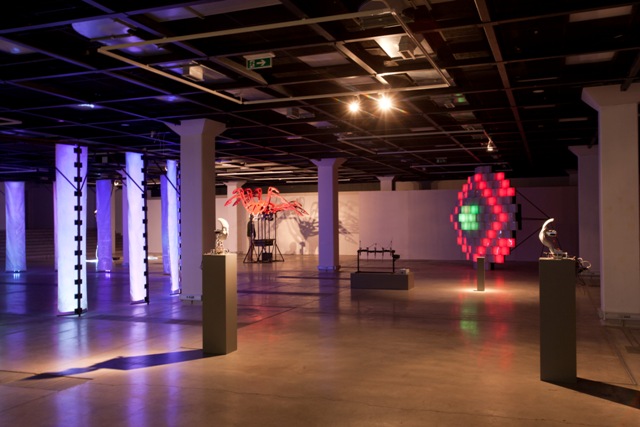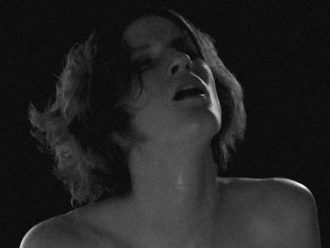We are increasingly getting accustomed to seeing the technological clockwork hidden behind a sterile, functional shell. It is very rare to experience the techno-logic outside a computer lab or an assembly line – and to do it in a poetic, nostalgic or even critical way. This review invites on a tour around the exhibition “Shift” by media artist Krists Pudzens that took place in Riga October, 2014 which was to do just about that – to take an artistic look at the shift in perception between the different levels of the social reality – the code, the technology and information – by using an esthetic mix of media archeology, kinetic-interactive art and alteration points between light and darkness.
The exhibition showcased seven installations created between years 2007 and 2014. It started off with ‘Kudos’ (2008) – two game sets designed in the laconic 8-bit aesthetic. While visually giving off a vibe of a futuristic recreational game designed in the beginnings of the digital era, it is an interactive system built from scratch. Another DIY object exhibited is the ‘Extraterrestrial Experience’ (2011) – a system of 127 light blocks arranged to create variations of light and pattern reminiscent of an ancient ethnographic symbol. The symbol being a digital abstraction shows the meta-level of information that our perception is constantly confronted with today. Another object that celebrates the ethereal qualities of information is entitled Nucleus – as it switches between movement and rest, the visual illusion of volume and body is broken down to its source code – a strip of light diodes analogous to information that can be stripped down to ones and zeros in a strip of a binary code.
The light becomes central in the installation ‘Neverending story’ (2012) with 22 large-scale light columns evoking associations with a prehistoric temple. The installation uses digital means to reenact the powerful, ancient and at times – mystical symbol of a circle. However, the interplays of the changing shades of light maintain the poetic language characteristic to the ancient and the mythical.
The exhibition also features objects that pay homage to movement and interactivity. The kinetic installation ‘Red Queen’s Race’ (2010) the title of which is an enlightening reference to both Lewis Carroll’s tale ‘Through the Looking-Glass’ and the Red Queen hypothesis in science, suggesting the ever-evolving nature of evolution, is a commentary on the rapid technological development which has already become the definitive trait of the 21st century. While the bird-like parts of the installation perform their fixed movements, the question on the pursuit of a ceaseless progress remains open.
Movement as an artistic principle is also portrayed in the installation ‘Unbalanced Force’ (2011). As a pair of electro-mechanic ‘crawlers’ attempt to climb a strain of illuminated diodes with no hurry or point, the viewer takes a test to see how much of the modern and the impatient human resides in him for a technological creation with a logic that is somewhat unfamiliar and backwards.
According to Michael Foucault, the controlling gaze of the Big brother in society has been long replaced by social arrangements which allow distributing power in the ways in which the society is structured and organized. The interactive kinetic installation ‘Professor Dovell’s Head’ (2008 – 2010) is an artistic focus on the cybernetic representation of gaze and vision with elements of interactivity that comes near the verge of surveillance.
Latvian art history does have a place for kinetic art and artists however new media art provides an even more insightful context for Krists Pudzens exhibition. The exhibited art works may be viewed as objects of light art or kinetic art, however the artist turns to technologies themselves by exploring them, turning them inside out and challenging the conventional perception of code, technology and information by combining his interest for digital media with his eye of a sculptor. Here, the art is used as a shift-factor, to engage the viewer and to un-hide something about technologies that can shed a new light on the way we interact with the world.
